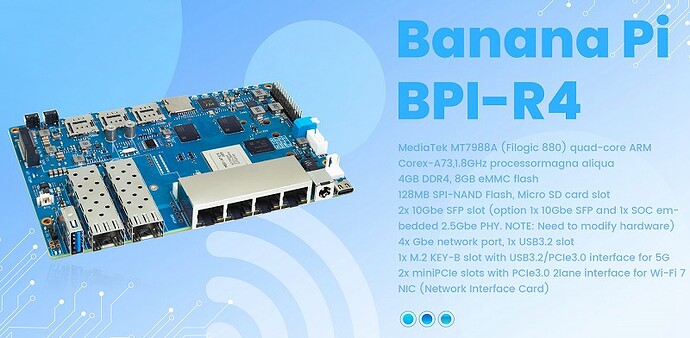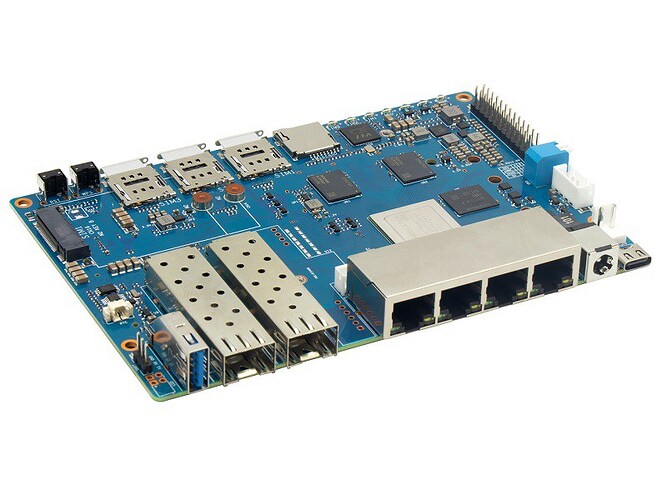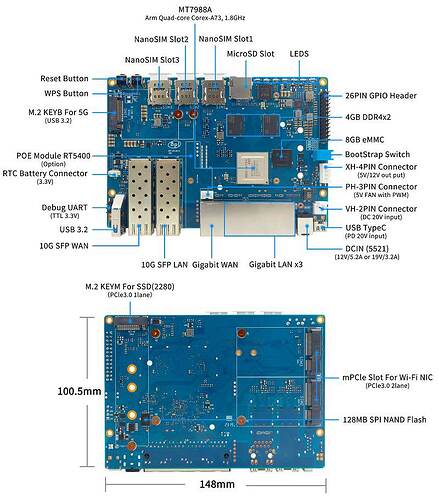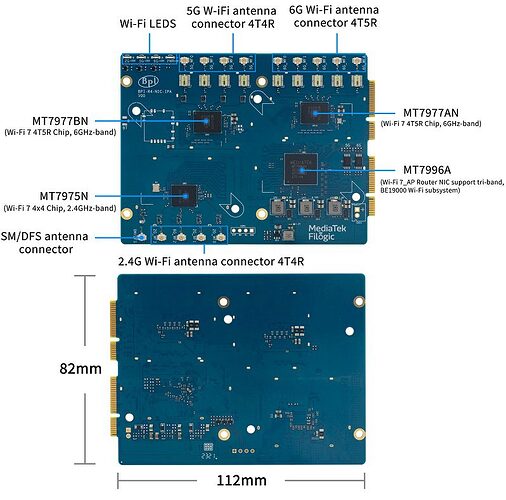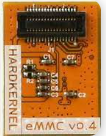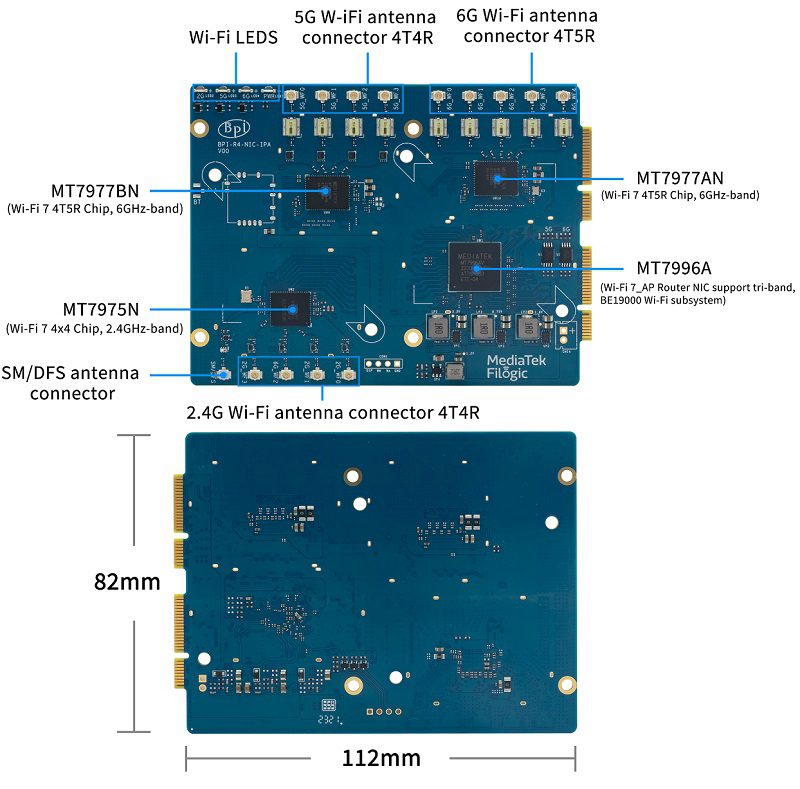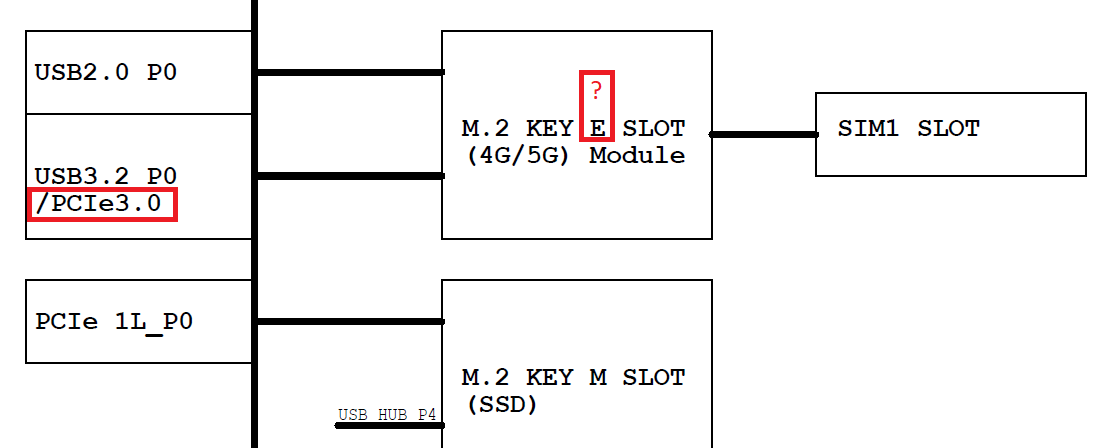Banana Pi BPI-R4 Router board with MediaTek MT7988A (Filogic 880) quad-core ARM Corex-A73 design ,4GB DDR4 RAM,8GB eMMC,128MB SPI-NAND flash onboard, also have 2x 10Gbe SFP, 4x Gbe network port,with USB3.2 port,M.2 support 4G/5G/NVME SSD.2x miniPCIe slots with PCIe3.0 2lane interface for Wi-Fi 7 NIC (Network Interface Card). It is a very high performance open source router development board.
Mediatek Filogic 880. the 36Gbps Wi-Fi 7 access point/router/gateway platform delivers the fastest and most reliable connection experience
The MediaTek MT7988A is a world-Leading network processing platform for high-performance and reliable networking experiences,both in wired and wireless applications. The MT7988A comprises a rich connection interface sets include 4 Gigabit Ethernet ports. 2 US下GMII interfaces. 4 PCIe Interfaces,and 2 USB 3.2 en1 Ports
the MT7988A further enables seamless Wi-Fi 7 tri-band,2.4 GHz.5 GHz and 6 GHz,connectivity,with its Wi-Fi 7 companion chip that features 320-MHz bandwidth,4096-QAM ,MLO,MRU,and AFC.
To answer the need of fast-evolving tunneling applications,the MT7988A comes with MediaTek Tunnel offload processor System(TOPS),which facilitates the processing of a wide range of tunneling protocols.The MT7988A optimizes networking performance with exquistitely tuned ISA of MediaTek TOPS,and is dedicated to lifting networking offloading performance to premium level.
Key Features
- MediaTek MT7988A (Filogic 880) quad-core Arm Corex-A73,1.8GHz processor
- 4GB DDR4
- 8GB eMMC flash
- 128MB SPI-NAND Flash
- Micro SD card slot
- 2x 10Gbe SFP slot (option 1x 10Gbe SFP and 1x SOC embedded 2.5Gbe PHY)
- 4x Gbe network port
- 1x USB3.2 slot
- 1x M.2 KEY-B slot with USB3.2 interface for 5G
- 1x M.2 KEY-M slot with PCIe3.0 1lane interface for NVME SSD
- 2x miniPCIe slots with PCIe3.0 2lane interface for Wi-Fi 7 NIC (Network Interface Card)
- 26 PIN GPIO Header for expanding application
BPI-R4 hardware interface:
Banana Pi BPI-R4 wifi7 module use MediaTek MT7996+MT7995+MT7977A+MT7977B chip design.
BPI-Wifi7 module interface:
1x10G SFP + 1x 2.5G ethreal port with PoE support version:
Online Wiki documents , will keep update:
